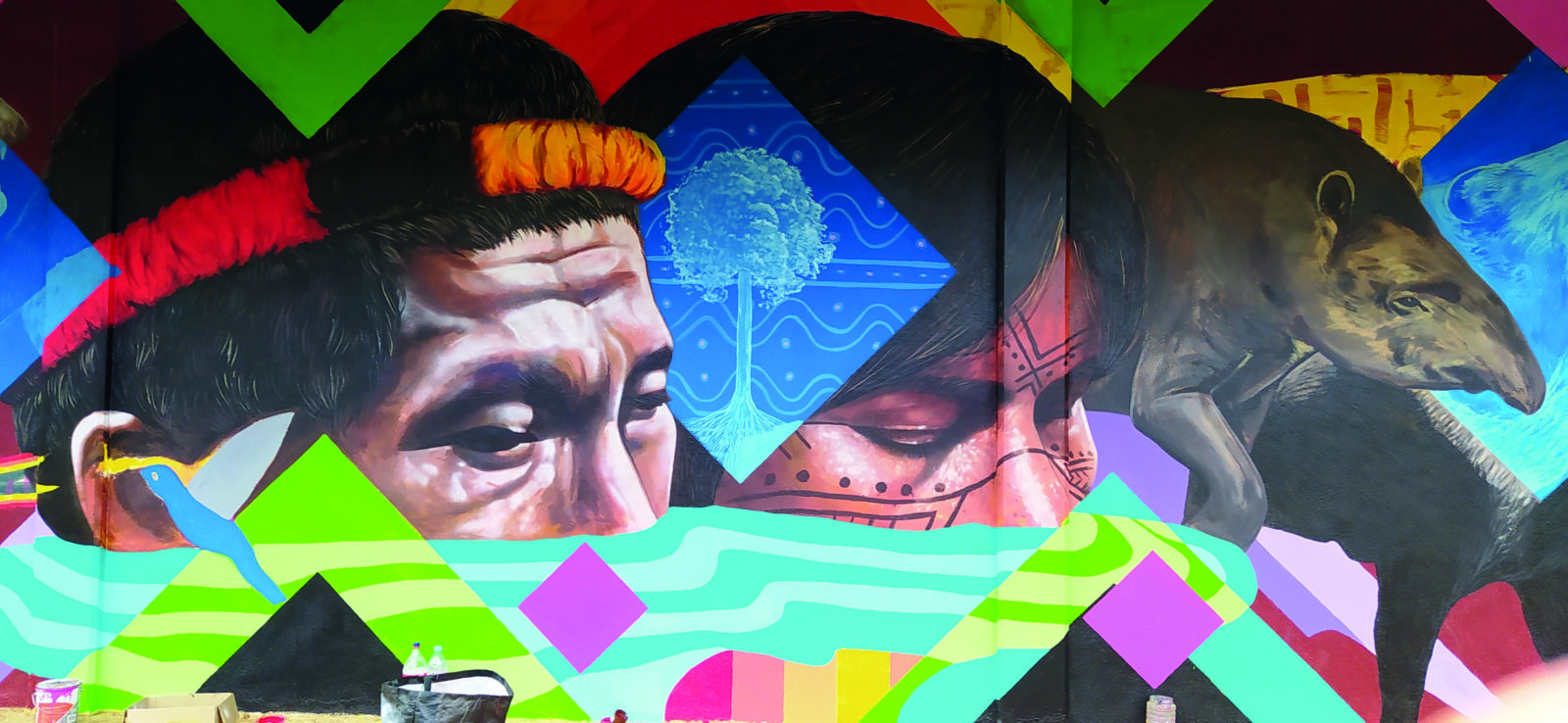
Mayouri Graff has colorized the sports hall and the aerodrome of the Guianese town of Camopi. Three murals were created by Erwan Lassouka, a Wayãpi artist in training and Franklin Piaguaje, an indigenous Colombian artist.
“This mural is beautiful, it feels good to pass by the sports hall. Now we have something in Camopi that can represent us,” smiles Sandra, a Camopi resident. In this Guiana village, there is an obvious desire for self-expression through drawing, as is witnessed by many (often inappropriate) “tags” on public buildings. In late 2021, the Mayouri Graff project offered an introduction to street art techniques to more than 40 young people from the middle-school and the youth center. They also took part in an initiation workshop in stop motion techniques, with the participation of Daniel Virgüez, audiovisual director and member of the Guayabo collective.

Graff is indeed a tool that most indigenous peoples use for identity and sociopolitical claims. It is also a means of expressing their conception of the world and society. This observation was made with the mural in the sports hall, where teko and wayãpi cosmogonies were the inspiration for the participants and 2 artists: Erwan Lassouka, a wayãpi artist in training and Franklin Piaguaje, an indigenous Colombian artist. This first call for indigenous artists in France was launched thanks to the Latino Graff festival in Toulouse and the Guayabo collective. The mural that they co-directed, also in the sports hall, conveys in wayãpi the message “Wat+ pei siko”: “living together”.

“It’s one of my best works,” says Franklin Piaguaje. “It was made in the framework of Teko and Wayãpi Amerindians’ vision of the world… A great experience that motivates me to keep writing stories about Latin American indigenous art.To the elders of the Camopi land, so many myths are found in this beautiful country. There is w+alakala, the positive energy in this land, the god who embraces the jungle, the god who lets me write this: older, older than the great awakenings of the jungle, Mr. Teko and Mrs. Wayapi, Mr. Wayãpi and Mrs. Teko. Teko people, the origin of the anaconda, Wayãpi people, the origin of beeswax, one of the many origins spoken by generations upon generations of our native ancestors…”, continues Franklin Piaguaje. At the aerodrome, a mural pays tribute to indigenous women, following the request of Camopi women during a cachiri with the artists. “We want Camopi women not to be ashamed of their physical appearance or of our traditional clothes,” says Marie, a Wayãpi woman.

This first version of Mayouri Graff aimed to enhance and strengthen Teko and Wayãpi cultures among the young through urban art, to give space to interethnic exchanges between Amerindian peoples of the Amazon. It contributes to identity claims and fights against the loss of self-confidence. At the local level, Isana Zegni, a middle school teacher, greatly contributed to the coordination of work with the pupils. Siméon Monerville, mediator at the youth center, coordinated young participants’ work and was a key cultural referent. This project would not have been possible without advice by the socio-cultural coordinator Jérémie Mata in Camopi and support by Julien Cambou, head of the Cultural Heritage department at the Guiana Amazonian Park.

MORE INFORMATION:
Parc amazonien de Guyane (PAG)
Autor : Jean-Maurice Montoute, PAG

